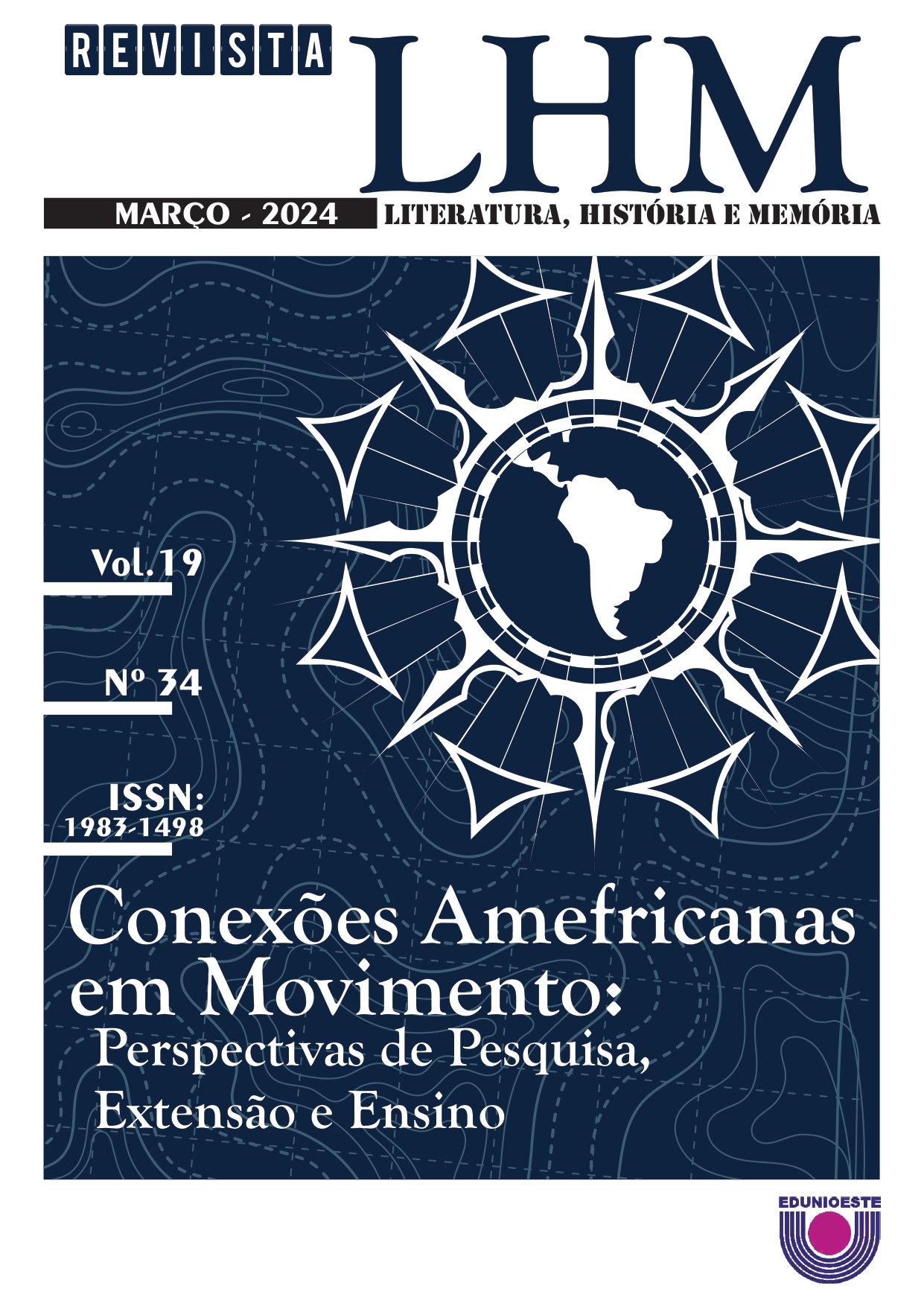Lygia Clark in Navilouca
DOI:
https://doi.org/10.48075/rlhm.v19i34.31053Abstract
Designed in a single edition, Navilouca is a concentration of underground artists at the height of the military dictatorship. Organized by Torquato Neto and Waly Salomão in 1972, it differs from traditional literary magazines, due to its extensive and intersemiotic character, with space for sensorial arts. In this scenario, the relevance of the body is cultivated in a field that offers more and more space, favoring freedom, experimentation and the visibility of subversive proposals. We will comment on the interweaving between body and work through the text “Da supressão do objeto (anotações)”, written by Lygia Clark for Navilouca, where it is possible to perceive the figuration of a body in creative movement. This body is ambiguous, and it contains, not always in a harmonious way, a full, luminous side, and a fragmented, dark side. In this moving body, some vanishing points are revealed and the modes of resistance against the brutalization of the dictatorship are deciphered. Here, the objective will be to present this work by Lygia Clark and explore the artist's writing, her notes on the relationship between body and object, in addition to resuming the considerations about the loss of authorship.
Downloads
Published
How to Cite
Issue
Section
License

This work is licensed under a Creative Commons Attribution-NonCommercial-ShareAlike 4.0 International License.
Aviso de Direito Autoral Creative Commons
Política para Periódicos de Acesso Livre
Autores que publicam nesta revista concordam com os seguintes termos:
1. Autores mantém os direitos autorais e concedem à revista o direito de primeira publicação, com o trabalho simultaneamente licenciado sob a Licença Creative Commons Attribution que permite o compartilhamento do trabalho com reconhecimento da autoria e publicação inicial nesta revista.2. Autores têm autorização para assumir contratos adicionais separadamente, para distribuição não-exclusiva da versão do trabalho publicada nesta revista (ex.: publicar em repositório institucional ou como capítulo de livro), com reconhecimento de autoria e publicação inicial nesta revista.
3. Autores têm permissão e são estimulados a publicar e distribuir seu trabalho online (ex.: em repositórios institucionais ou na sua página pessoal) a qualquer ponto antes ou durante o processo editorial, já que isso pode gerar alterações produtivas, bem como aumentar o impacto e a citação do trabalho publicado (Veja O Efeito do Acesso Livre).
Licença Creative Commons
Esta obra está licenciada com uma Licença Creative Commons Atribuição-NãoComercial-CompartilhaIgual 4.0 Internacional, o que permite compartilhar, copiar, distribuir, exibir, reproduzir, a totalidade ou partes desde que não tenha objetivo comercial e sejam citados os autores e a fonte.


